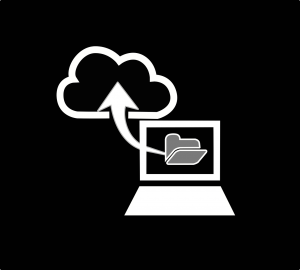Backup Basics
Easy automation

Nobody likes to do backups. It’s tedious, and you never know if it’ll be needed. However, with ransomware now moving around the internet, backups are super important.
If you happen to be a Mac user, you don’t have to worry about ransomware. There just isn’t hardly any ransomware that targets Macintosh. Your iCloud backups are purely to guard against accidental deletion and migrating to your next computer. For the rest of us, I’ll continue.
Ransomware History Lesson:
When ransomware first started, it was run by efficient criminal gangs that went to great lengths to assure victims that they would get their data back if the fee was paid. Phone support included. Yes, they actually had phone support.
However now, the perpetrators have degenerated to the point now that most ransomware infections don’t bother to return a decryption key when paid. That’s the main reason you shouldn’t pay ransomware anymore. You can read more about it from this website.
Backups are your friend:
If you backup properly, you can always restore your computer to just before the ransomware infected your computer. So what’s a proper backup?
There are 2 ways to do this. You can have a second hard drive that you physically disconnect from the computer, or you can have an online backup service that is setup to not be susceptible to ransomware. The problem is that if your backup is connected to your computer, the ransomware will encrypt the backups along with everything else. Some ransomwares even specifically target backups for deletion before encrypting.
The first thing is that the backup should not be attached to your computer. If you have an external drive as your backup, it will just be encrypted along with the rest of your files. The same for any network storage or file shares.
You may think that cloud storage should be fine, however the answer to that is a big “depends”. If the ransomware can delete or change the data in the cloud storage, then the cloud storage provides no protection from ransomware.
Now the good news is that most online drive/backup providers protect against malware attacks. The bad news is that any plan that does requires a monthly fee. Most fees are about $6 per computer per month but get down to as low as $1 per computer per month. I use one Carbonite account for all my family’s computers so it’s cheap, but any of the following services would work as well (Just not their free versions).
Carbonite: Paid, fully featured for nightly backups or continuous.
Dropbox Paid – Most expensive option, only backups what’s in it’s drive.
Onedrive Paid, Onedrive is free, but you need a paid Microsoft 265 subscription to be safe from malware.
A good option if you already have Microsoft 365.
GoogleDrive Paid G-suite account allows versions to be saved and protect from ransomware.
Recovering your data from accidental deletion is as easy as going to your backup provider and selecting the file to restore. Recovering from a ransomware attack is much more complicated, and that’s where you’ll need help. But with a cloud backup, you can recover while only losing what’s been done since the last backup.
Share this
Gary Weessies, CISSP
CyberSecurity Consultant
